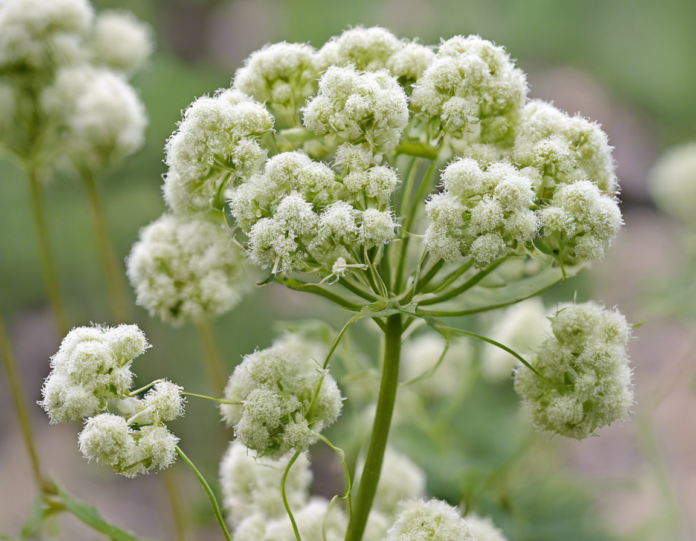Snowball weeds, also known as "snow-on-the-mountain" or Euphorbia marginata, are a common issue for gardeners. These invasive plants can quickly take over your garden, competing with your desired plants for space, water, and nutrients. If left unchecked, snowball weeds can wreak havoc on your carefully curated garden space. However, with the right techniques, you can effectively remove and control these pesky plants. In this blog post, we will outline five tips to help you tackle snowball weeds in your garden and regain control of your outdoor space.
Understanding Snowball Weeds
Before we dive into the tips for removing snowball weeds, let's first understand what these plants are and why they can be a nuisance in your garden. Snowball weeds are fast-growing annual plants that can reach heights of up to three feet. They have distinctive green and white leaves with small white flowers that resemble snowballs, hence their name. While they may look attractive to some, snowball weeds can rapidly spread and establish themselves in your garden, crowding out other plants and reducing biodiversity.
Tip 1: Early Detection and Prevention
One of the most effective strategies for dealing with snowball weeds is early detection and prevention. Regularly inspect your garden for any signs of these invasive plants, especially in the spring and early summer when they are most active. By catching them early, you can prevent them from spreading and becoming a more significant problem. Additionally, consider using mulch or ground cover plants to reduce bare soil where snowball weeds can take hold.
Tip 2: Hand Pulling
For small infestations or isolated plants, hand pulling can be an effective method of removing snowball weeds. Make sure to wear gloves and protective clothing to avoid contact with the plant's milky sap, which can cause skin irritation. Pull the weeds gently but firmly, making sure to remove the entire root system to prevent regrowth. Dispose of the weeds in a sealed bag to prevent them from spreading seeds in your garden.
Tip 3: Mulching and Smothering
Mulching and smothering are effective techniques for controlling snowball weeds in larger areas or where hand pulling is not practical. Mulch with a thick layer of organic material such as wood chips, straw, or cardboard to deprive the weeds of sunlight and prevent them from germinating. Alternatively, you can smother the weeds by covering them with a tarp or landscape fabric for several weeks to inhibit their growth. Be diligent and check periodically to ensure the weeds are not regrowing around the edges.
Tip 4: Herbicides
In cases of severe infestations or persistent snowball weed growth, herbicides can be used as a last resort. Selective herbicides that target broadleaf weeds are most effective against snowball weeds while sparing your desired plants. Follow the manufacturer's instructions carefully when applying herbicides, and consider spot treatments rather than blanket applications to minimize harm to beneficial plants and wildlife. Always use herbicides responsibly and as a supplementary method to manual removal and prevention techniques.
Tip 5: Monitor and Maintain
After implementing the above strategies to remove snowball weeds from your garden, it is essential to monitor and maintain your garden to prevent future infestations. Regularly inspect your garden for any signs of regrowth or new snowball weed seedlings. Be proactive in addressing any emerging weeds promptly to prevent them from establishing themselves. Maintaining a healthy garden with proper watering, fertilization, and plant spacing can also help prevent snowball weeds from reappearing.
Frequently Asked Questions (FAQs):
-
Q: Are snowball weeds toxic to pets?
A: Yes, snowball weeds contain a milky sap that can be toxic to pets if ingested. It is best to keep pets away from these plants. -
Q: Can snowball weeds be composted?
A: It is not recommended to compost snowball weeds, as the seeds can survive the composting process and germinate in your garden. -
Q: How fast do snowball weeds spread?
A: Snowball weeds are fast-growing plants that can spread quickly through self-seeding and root expansion, making early detection crucial. -
Q: Will mulching alone effectively control snowball weeds?
A: While mulching can help suppress snowball weed growth, it is usually most effective when combined with other removal techniques like hand pulling or herbicides. -
Q: Are there any natural predators or controls for snowball weeds?
A: Some insects and animals may feed on snowball weeds, but they are not reliable controls. Manual removal and prevention methods are generally more effective. -
Q: Can snowball weeds be transplanted to a different location?
A: It is best to avoid transplanting snowball weeds, as they can quickly spread and become invasive in new areas.
By following these tips and strategies for removing snowball weeds from your garden, you can effectively regain control of your outdoor space and create a healthier environment for your desired plants to thrive. Remember to be patient and persistent in your efforts, as managing invasive weeds is an ongoing process that requires attention and diligence. With proper care and maintenance, you can enjoy a beautiful and weed-free garden for years to come.

